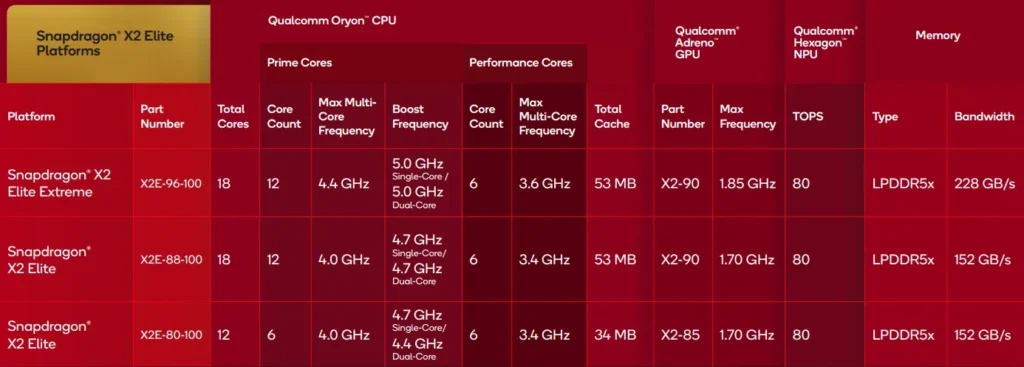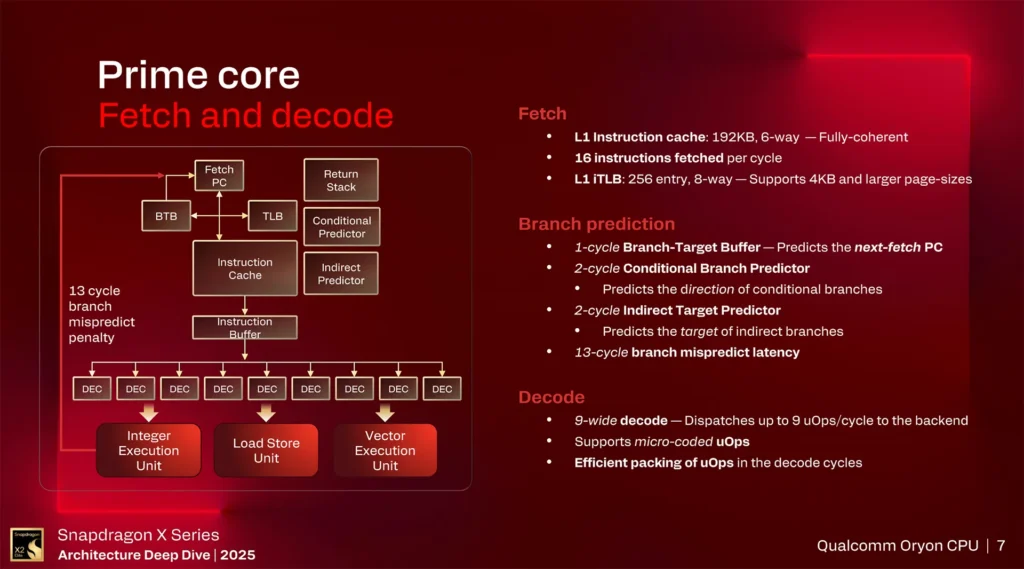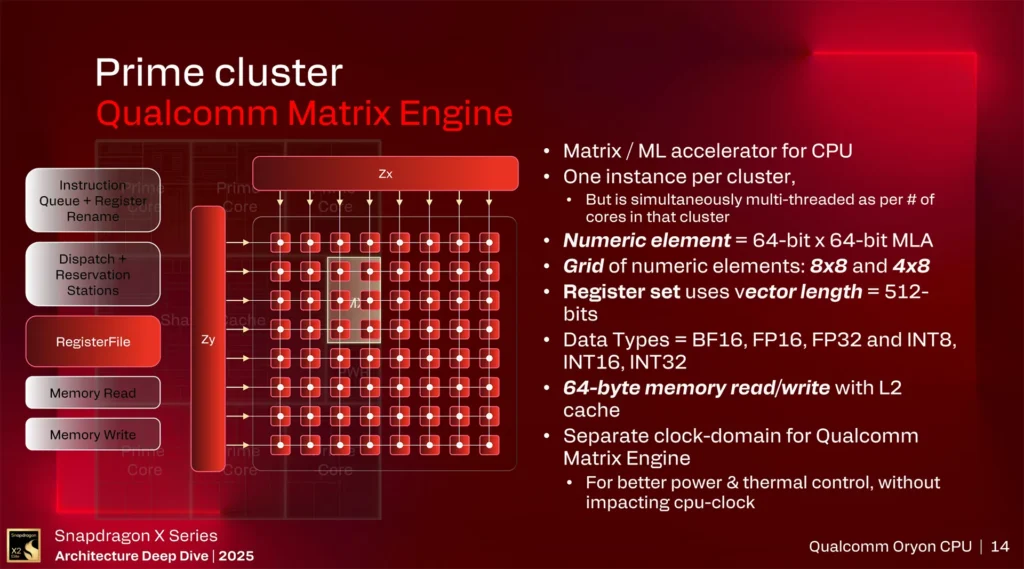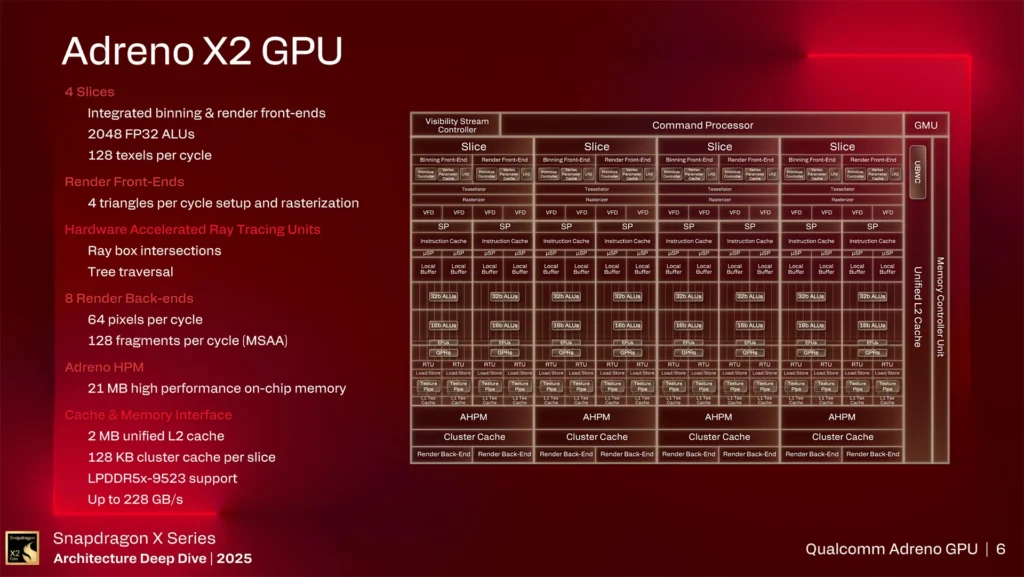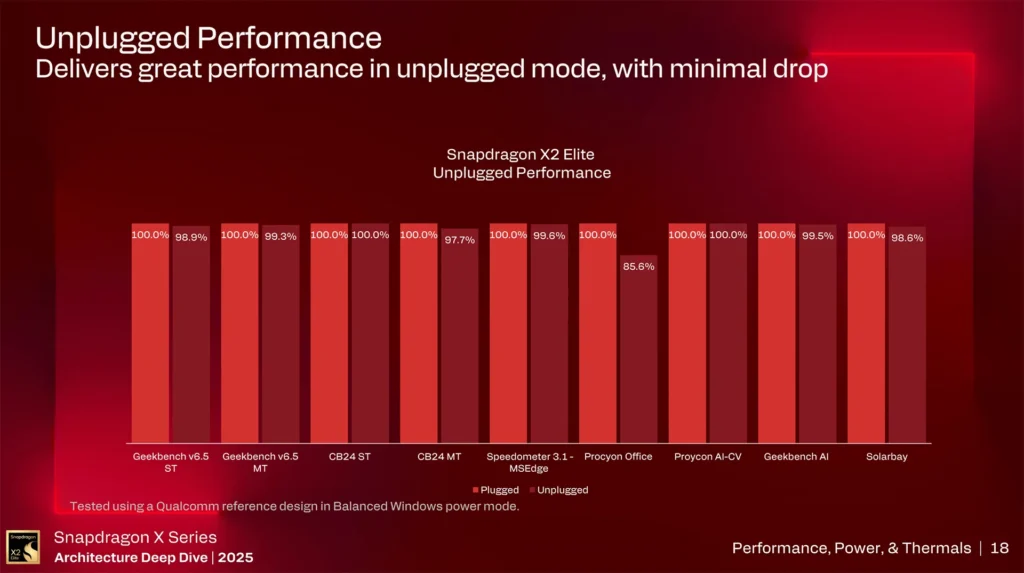Qualcomm Snapdragon X2 Elite Architectural Details and Performance Preview
-
 Ken Addison
Ken Addison
Last week, Qualcomm flew us to San Diego to learn more about the upcoming Snapdragon X2 Elite family of products. Initially announced in September of this year, the Snapdragon X2 Elite is the newest generation of Qualcomm’s Windows chip offerings.
The CPU aspect of the Snapdragon X2 Elite sees some major changes compared to Snapdragon X1 Elite (which may or may not be what it is officially called going forward). The CPU has advanced and is now based on the 3rd generation Oryon core microarchitecture. Snapdragon X1 Elite was based on 1st generation Oryon, and the debut of 2nd generation Oryon was last year with the Snapdragon 8 Elite mobile products.
In addition to a new microarchitecture, the maximum CPU core count has increased with the X2 Elite products to a peak of 18 versus 12 on the previous generation. This is obviously a big jump and brings a lot of additional performance to the table for Snapdragon PCs.
In addition, the core types are a bit different for X2 Elite. While all 12 cores on the X1 Elite were of an identical design, the X2 Elite moves to a mix of both Prime and Performance cores, essentially creating a tiered, “big little” design.
The architecture of the Prime Cores on Snapdragon X2 Elite is wider and deeper than the previous generation allowing for higher IPC.
When compared to the Prime cores, the Performance cores are less wide and deep in their execution and are optimized for better efficiency at lower power levels.
Both the Prime and the Performance cores have a new Matrix Engine in their clusters, allowing for accelerated matrix operations on the CPU complex for things like lower latency but lower throughout AI inference.
The new Adreno X2 GPU found in the Snapdragon X2 Elite series is the most powerful GPU that Qualcomm has ever developed, with up to 4 slices enabled allowing for up to 2.3X performance versus the GPU found in the Snapdragon X1 Elite.
The NPU in the Snapdragon X2 Elite is rated at up 80 TOPS, making it the fastest NPU we’ve ever seen in a consumer device.
On the power and performance side, Qualcomm provided insight into the full performance range of the Snapdragon X2 Elite series of processors.
According to Qualcomm’s numbers, the Snapdragon X2 Elite can provide higher performance at equivalent power levels than the competition from Intel and AMD in the form of Lunar Lake and Strix Point respectively. When Snapdragon X2 Elite is unconstrained, Qualcomm shows it beating the competition handily.
In addition, Qualcomm was quick to point out that like the Snapdragon X1 Elite, the Snapdragon X2 Elite sees only a small performance drop when running on battery power, which is a stark contrast from what we’ve seen from recent mobile platforms from both Intel and AMD.
Qualcomm did let attendees get hands on with reference designs of the Snapdragon X2 Elite platforms, and also provided repeatable performance results.
These are definitely some impressive results, and it’s the first time we’ve seen the company call out the differences between the X2 Elite Extreme, the X2 Elite, and the X2 Elite 12-core parts.
We look forward to getting our hands on the Snapdragon X2 Elite and evaluating these performance claims as it starts to ship in devices in 1H 2016.
